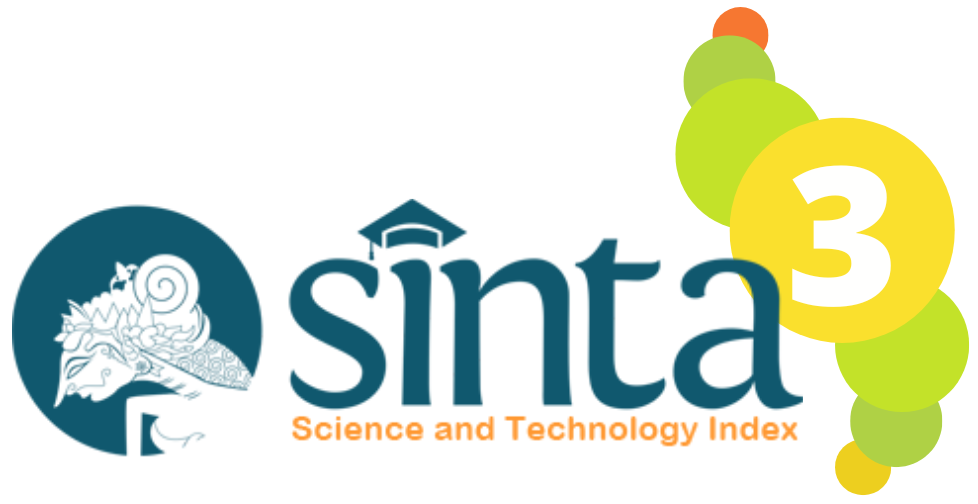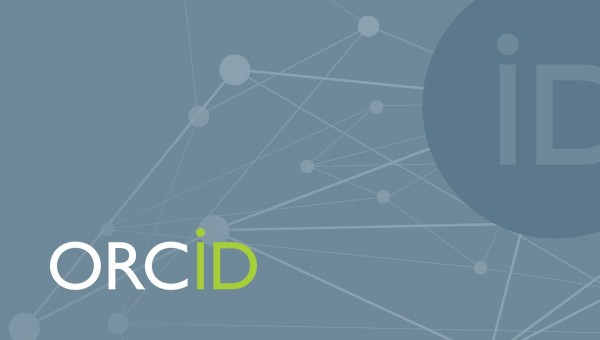Enhancing Critical Thinking in Optics through Project-Based STEAM Learning with Visual Simulations
DOI:
10.29303/jpft.v11i1.8750Published:
2025-06-04Issue:
Vol. 11 No. 1 (2025): January-JuneKeywords:
PjBL, STEAM, Visual Simulation Media, critical thinking skills, opticsArticles
Downloads
How to Cite
Downloads
Metrics
Abstract
Optical material is widely applied in everyday technology but remains difficult for students to grasp due to its abstract nature. This challenge is linked to students’ low critical thinking skills—an essential 21st-century competence. This study aims to enhance students' critical thinking on optical topics through the integration of project-based learning with a STEAM approach and visual simulation media (PjBL-STEAM-MSV). A mixed-method design with an untreated control group and pretest-posttest was employed. The participants were 54 students from SMAN 1 Woha, NTB, Indonesia, divided into an experimental group (PjBL-STEAM-MSV) and a control group (conventional instruction). Data collection used a critical thinking essay test (5 items, reliability = 0.636) and interview guidelines. Quantitative data were analyzed using t-tests, N-gain, and effect size; qualitative data through reduction, coding, and interpretation. Results indicated that PjBL-STEAM-MSV significantly improved students’ critical thinking in optics (α = 0.01). The experimental group's N-gain score was 0.48 (moderate), higher than the control group’s 0.20 (low). The most notable improvements in the experimental group were in evaluation and explanation, while in the control group, gains were limited to analysis and explanation. Experimental group students struggled with explanation during presentations due to time constraints, whereas the control group showed difficulty across most indicators due to a focus on rote learning. Interviews revealed that experimental group students experienced more active, interactive, and structured learning. This aligns with the high effect size of 1.7. Further research should explore media development and sustained student mentoring to maximize outcomes.
References
Agustini, K., Santyasa, I., Tegeh, I., Santyadiputra, G., & Mertayasa, I. (2022). Quantum flipped learning and students’ cognitive engagement in achieving their critical and creative thinking in learning. International Journal of Emerging Technologies in Learning (iJET), 17(18), 4-25. DOI: https://doi.org/10.3991/ijet.v17i18.32101
Al Anshori, I., Parno, P., & Hidayat, A. (2024). Analisis Kemampuan Berpikir Kritis Siswa Pada Pembelajaran Optik. Briliant: Jurnal Riset dan Konseptual, 9(3), 602-613. DOI: https://doi.org/10.28926/briliant.v9i3.1642
Alsaleh, N. J. (2020). Teaching Critical Thinking Skills: Literature Review. Turkish Online Journal of Educational Technology-TOJET, 19(1), 21-39.
Anggraini, R. T., Hidayat, A., Fauziyah, S., Pramono, N. A., Supriana, E., & Ali, M. (2021, March). The building of students’ problem-solving skills through STEM aproach with virtual simulation media. In Journal of Physics: Conference Series (Vol. 1842, No. 1, p. 012073). IOP Publishing.
Arikunto. (2013). Manajemen Penelitian. . PT Rineka Cipta.
Berliana, D. R., Suwarma, I. R., & Novia, H. (2024). The Effect of Project Based Learning (PjBL)-STEM in Improving Students' Science Literacy Skills on Topic of Alternative Energy. Jurnal Pendidikan Fisika dan Teknologi, 10(1), 141-148. DOI: https://doi.org/10.29303/jpft.v10i1.6896
Betari, A., Hasanati, A., Fuadah, F., Amir, M. T., & Parno, P. (2021). students’ learning motivation through the quality of scientific argumentation skills and students’ cognitive learning outcomes on Newton’s Laws: A relationship analysis. J. Ilm. Pendidik. Fis. Al-BiRuNi, 10(1), 71-84. DOI: https://doi.org/10.24042/jipfalbiruni.v10i1.7642
Campbell, S., Greenwood, M., Prior, S., Shearer, T., Walkem, K., Young, S., ... & Walker, K. (2020). Purposive sampling: complex or simple? Research case examples. Journal of research in Nursing, 25(8), 652-661. DOI: https://doi.org/10.1177/1744987120927206
Creswell, J. W. (2021). A concise introduction to mixed methods research. SAGE publications.
Facione, P. A. (2000). The disposition toward critical thinking: Its character, measurement, and relationship to critical thinking skill. Informal logic, 20(1). DOI: https://doi.org/10.22329/il.v20i1.2254
Faridi, H., Tuli, N., Mantri, A., Singh, G., & Gargrish, S. (2021). A framework utilizing augmented reality to improve critical thinking ability and learning gain of the students in Physics. Computer Applications in Engineering Education, 29(1), 258-273. DOI: https://doi.org/10.1002/cae.22342
Fauziyah, S., Pramono, N. A., Anggraini, R. T., Hidayat, A., Supriana, E., & Ali, M. (2021, June). The increase of students’ critical thinking abilities on optical instrument topic through pbl-stem with virtual simulation media. In Journal of Physics: Conference Series (Vol. 1918, No. 5, p. 052067). IOP Publishing.
Fiandini, M., Nandiyanto, A. B. D., Al Husaeni, D. F., Al Husaeni, D. N., & Mushiban, M. (2024). How to calculate statistics for significant difference test using SPSS: Understanding students comprehension on the concept of steam engines as power plant. Indonesian Journal of Science and Technology, 9(1), 45-108. DOI: https://doi.org/10.17509/ijost.v9i1.64035
Hasani, R., Harjono, A., & Kosim, K. (2024). The Effect of STEAM-Based Project-Based Learning Model on the Critical Thinking Skills of Eleventh-Grade Students in the Topics of Elasticity and Hooke's Law. Jurnal Pendidikan Fisika dan Teknologi, 10(2), 395-403. DOI: https://doi.org/10.29303/jpft.v10i2.7960
Indahwati, S. D., Rachmadiarti, F., & Hariyono, E. (2023). Integration of PJBL, STEAM, and Learning Tool Development in Improving Students' Critical Thinking Skills. IJORER: International Journal of Recent Educational Research, 4(6), 808-818. DOI: https://doi.org/10.46245/ijorer.v4i6.434
Khoa, B. T., Hung, B. P., & Hejsalem-Brahmi, M. (2023). Qualitative research in social sciences: data collection, data analysis and report writing. International Journal of Public Sector Performance Management, 12(1-2), 187-209. DOI: https://doi.org/10.1504/IJPSPM.2023.132247
Li, Y., Li, X., Zhu, D., & Guo, H. (2020). Cultivation of the students’ critical thinking ability in numerical control machining course based on the virtual simulation system teaching method. IEEE Access, 8, 173584-173598. DOI: https://doi.org/10.1109/ACCESS.2020.3025079
Mabrurah, F. F., Qadar, R., & Sulaeman, N. F. (2023). Enhancing high school students’ critical thinking skills through STEM-PjBL in optics topic. Berkala Ilmiah Pendidikan Fisika, 11(1), 1-8. DOI: https://doi.org/10.20527/bipf.v11i1.14068
Mariani, D., Indriyanti, N. Y., & Supurwoko, S. (2024). The effectiveness of the STEAM-based PjBL model on students’ creative thinking skills and cognitive load in terms of self-efficacy. Innovations in Science Education and Practice, 1(1), 47-58.
Mešić, V., Neumann, K., Aviani, I., Hasović, E., Boone, W. J., Erceg, N., ... & Repnik, R. (2019). Measuring students’ conceptual understanding of wave optics: A Rasch modeling approach. Physical Review Physics Education Research, 15(1), 010115. DOI: https://doi.org/10.1103/PhysRevPhysEducRes.15.010115
Mulders, M., Buchner, J., & Kerres, M. (2020). A framework for the use of immersive virtual reality in learning environments. International Journal of Emerging Technologies in Learning (iJET), 15(24), 208-224. DOI: https://doi.org/10.3991/ijet.v15i24.16615
Nasser, N., Khouzai, E., Mostapha, E., & Zahidi, A. (2021). Geometrical Optic Learning Difficulties for Moroccan Students during Secondary/University Transition. International Journal of Evaluation and Research in Education, 10(1), 24-34. DOI: https://doi.org/10.11591/ijere.v10i1.20639
Ndihokubwayo, K., Uwamahoro, J., & Ndayambaje, I. (2020). Effectiveness of PhET Simulations and YouTube Videos to Improve the Learning of Optics in Rwandan Secondary Schools. African Journal of Research in Mathematics, Science and Technology Education. https://doi.org/10.1080/18117295.2020.1818042 DOI: https://doi.org/10.1080/18117295.2020.1818042
Nurdiansah, I., & Makiyah, Y. S. (2021). Efektivitas Modul Hybrid Project Based Learning (H-Pjbl) Berbasis Laboratorium Untuk Meningkatkan Keterampilan Proses Sains Siswa. Jurnal Pendidikan Fisika Dan Teknologi, 7(2), 104-110 DOI: https://doi.org/10.29303/jpft.v7i2.2750
Paramitha, D., Prasetyo, Z. K., Jumadi, J., & Siregar, A. N. (2023). The Influence of Use of Problem-Based Learning E-Book Materials of Optical Equipment on Improving Students' Critical Thinking Ability. Jurnal Penelitian Pendidikan IPA, 9(11), 9149-9155. DOI: https://doi.org/10.29303/jppipa.v9i11.5165
Parno, Anggraini, R. T., Hidayat, A., Fauziyah, S., Pramono, N. A., Supriana, E., & Ali, M. (2021a). The Building of Students’ Problem Solving Skills through STEM Aproach with Virtual Simulation Media. Journal of Physics: Conference Series, 1842(1). https://doi.org/10.1088/1742-6596/1842/1/012073 DOI: https://doi.org/10.1088/1742-6596/1842/1/012073
Parno, Fauziyah, S., Pramono, N. A., Anggraini, R. T., Hidayat, A., Supriana, E., & Ali, M. (2021b). The increase of students’ critical thinking abilities on optical instrument topic through pbl-stem with virtual simulation media. Journal of Physics: Conference Series, 1918(5). https://doi.org/10.1088/1742-6596/1918/5/052067 DOI: https://doi.org/10.1088/1742-6596/1918/5/052067
Parno, P., Asim, A., Suwasono, P., & Ali, M. (2019). The Influence of Problem Based Learning on Critical Thinking Ability for Students in Optical Instrument Topic. Jurnal Pendidikan Fisika Indonesia, 15(1). https://doi.org/10.15294/jpfi.v15i1.19309 DOI: https://doi.org/10.15294/jpfi.v15i1.19309
Parno, Yuliati, L., & Ni’Mah, B. Q. A. (2019). The influence of PBL-STEM on students’ problem-solving skills in the topic of optical instruments. Journal of Physics: Conference Series, 1171(1). https://doi.org/10.1088/1742-6596/1171/1/012013 DOI: https://doi.org/10.1088/1742-6596/1171/1/012013
Permana, N. D., Lestari, I., Harahap, F. D. S., Azhar, A., & Defianti, A. (2023). Project Based Learning (PjBL) Model with STEAM Approach: Its Impact on Students Creative Thinking Skills on Energy in Living System Topic. Journal of Natural Science and Integration, 6(2), 186-195. DOI: https://doi.org/10.24014/jnsi.v6i2.25791
Prahani, B. K., Nisa, K., Nurdiana, M. A., Krisnaningsih, E., Amiruddin, M. Z. B., & Sya'roni, I. (2023). Analyze of STEAM education research for three decades. JOTSE, 13(3), 837-856. DOI: https://doi.org/10.3926/jotse.1670
Rahmawati, S., Masykuri, M., & Sarwanto, S. (2021). The effectiveness of discovery learning module classification of materials and its changes to enhance critical thinking skills. Jurnal Inovasi Pendidikan IPA, 7(1), 74-84. DOI: https://doi.org/10.21831/jipi.v7i1.33253
Rapi, N. K., Suastra, I. W., Widiarini, P., & Widiana, I. W. (2022). The influence of flipped classroom-based project assessment on concept understanding and critical thinking skills in physics learning. Jurnal Pendidikan IPA Indonesia, 11(3), 351-362. DOI: https://doi.org/10.15294/jpii.v11i3.38275
Reynders, G., Lantz, J., Ruder, S. M., Stanford, C. L., & Cole, R. S. (2020). Rubrics to assess critical thinking and information processing in undergraduate STEM courses. International Journal of STEM Education, 7, 1-15. DOI: https://doi.org/10.1186/s40594-020-00208-5
Rizki, I. A., Setyarsih, W., & Suprapto, N. (2022). Project-based learning-STEAM model on students’ critical thinking and scientific literacy: A bibliometric analysis. Jurnal Penelitian Ilmu Pendidikan, 15(1), 79-89. DOI: https://doi.org/10.21831/jpipfip.v15i1.45403
Rohman, M. H., Marwoto, P., Nugroho, S. E., & Supriyadi, S. (2023, September). The Needs Analysis for the Development of an Ethnoecological-STEAM Project-Based Learning Model with the Utilization of Water Hyacinth to Improve 21st Century 4C Skills for Students as Science Teacher Candidates. In International Conference on Science, Education, and Technology (Vol. 9, pp. 427-437).
Rosdiana, L., & Parno, P. (2023). Analogy strategy: Improving process skills and understanding science concepts of electric circuit materials. In International Conference on Teaching and Learning (Vol. 1, pp. 102-111).
Sari, D. M. M., & Wardhani, A. K. (2020). Critical thinking as learning and innovation skill in the 21st century. Journal of English Language and Pedagogy, 3(2), 27-34. DOI: https://doi.org/10.36597/jelp.v3i2.8778
Sari, R. P., Mauliza, M., Putri, H., & Setiawaty, S. (2024). Implementation of Project Based Learning Model Integrated STEAM Approach to Improve Students Critical Thinking. Journal of Education in Science, Technology, Mathematics, and Disaster Management, 1(1), 1-13.
Sari, R., Sumarmi, S., Astina, I., Utomo, D., & Ridhwan, R. (2021). Increasing students critical thinking skills and learning motivation using inquiry mind map. International Journal of Emerging Technologies in Learning (iJET), 16(3), 4-19. DOI: https://doi.org/10.3991/ijet.v16i03.16515
Sarwanto, S., Fajari, L. E. W., & Chumdari, C. (2021). Critical thinking skills and their impacts on elementary school students. Malaysian Journal of Learning and Instruction, 18(2), 161. DOI: https://doi.org/10.32890/mjli2021.18.2.6
Sarwinda, K., Rohaeti, E., & Fatharani, M. (2020). The development of audio-visual media with contextual teaching learning approach to improve learning motivation and critical thinking skills. Psychology, Evaluation, and Technology in Educational Research, 2(2), 98-114. DOI: https://doi.org/10.33292/petier.v2i2.12
Sebald, J., Fliegauf, K., Veith, J. M., Spiecker, H., & Bitzenbauer, P. (2022). The world through my eyes: Fostering students’ understanding of basic optics concepts related to vision and image formation. Physics, 4(4), 1117-1134. DOI: https://doi.org/10.3390/physics4040073
Shaw, A., Liu, O. L., Gu, L., Kardonova, E., Chirikov, I., Li, G., ... & Loyalka, P. (2020). Thinking critically about critical thinking: validating the Russian HEIghten® critical thinking assessment. Studies in Higher Education, 45(9), 1933-1948. DOI: https://doi.org/10.1080/03075079.2019.1672640
Sinta, M., Sakdiah, H., Novita, N., Ginting, F. W., & Syafrizal, S. (2022). Penerapan Model Pembelajaran Project Based Learning (PjBL) untuk Meningkatkan Kemampuan Berpikir Kreatif Siswa pada Materi Hukum Gravitasi Newton di MAS Jabal Nur. Phi: Jurnal Pendidikan Fisika dan Terapan, 8(1), 24-28. DOI: https://doi.org/10.22373/p-jpft.v3i3.14546
Supriyatno, T., Susilawati, S., & Hassan, A. (2020). E-learning development in improving students' critical thinking ability. Cypriot Journal of Educational Sciences, 15(5), 1099-1106. DOI: https://doi.org/10.18844/cjes.v15i5.5154
Sutiani, A., Situmorang, M., & Silalahi, A. (2021). Implementation of an inquiry learning model with science literacy to improve student critical thinking skills. International Journal of Instruction, 14(2), 117-138. DOI: https://doi.org/10.29333/iji.2021.1428a
Sutrisno, F. H., Handayanto, S. K., Supriyana, E., & Laksmisari, R. (2018). How Does the Students’ Critical Thinking Ability In Geometry Optics?. Unnes Science Education Journal, 7(2). DOI: https://doi.org/10.15294/usej.v7i2.24297
Syamsuriwal, S., Wahyono, U., & Paramita, I. (2024). Pengaruh Model Pembelajaran Project Based Learning (PjBL) Pada Materi Alat-Alat Optik Terhadap Kemampuan Berpiikir Kritis Siswa SMA Negeri 1 Sigi. JPFT (Jurnal Pendidikan Fisika Tadulako Online), 12(1), 55-62. DOI: https://doi.org/10.22487/jpft.v12i1.3500
Thompson, N., Wang, X., & Baskerville, R. (2022). Improving IS practical significance through effect size measures. Journal of Computer Information Systems, 62(3), 434-441. DOI: https://doi.org/10.1080/08874417.2020.1837036
Triyono, A., Nuary, R. H., Permatasari, N., Yuni, Y., & Wibowo, T. (2024). The Level of Effectiveness of TPS and Conventional Methods Judging from Students' Geometry Learning Results Using the N-Gain Test. AlphaMath: Journal of Mathematics Education, 10(1), 125-136. DOI: https://doi.org/10.30595/alphamath.v10i1.21530
Uwamahoro, J., Ndihokubwayo, K., Ralph, M., & Ndayambaje, I. (2021). Physics students’ conceptual understanding of geometric optics: Revisited analysis. Journal of Science Education and Technology, 30(5), 706-718. DOI: https://doi.org/10.1007/s10956-021-09913-4
Wahyudi, W., Nurhayati, N., & Saputri, D. F. (2022). The Effectiveness of Problem Solving-based Optics Module in Improving Higher Order Thinking Skills of Prospective Physics Teachers. Jurnal Penelitian Pendidikan IPA, 8(4), 1992-2000. DOI: https://doi.org/10.29303/jppipa.v8i4.1860
Wibowo, F. C., Darman, D. R., Prahani, B. K., & Faizin, M. N. (2022, November). Optics Virtual Laboratory (OVL) Based on Physics Independent Learning (PIL) For Improving Critical Thinking Skill. In Journal of Physics: Conference Series (Vol. 2377, No. 1, p. 012077). IOP Publishing. DOI: https://doi.org/10.1088/1742-6596/2377/1/012077
Yusuf, I., & Asrifan, A. (2020). Peningkatan Aktivitas Kolaborasi Pembelajaran Fisika Melalui Pendekatan Stem Dengan Purwarupa Pada Siswa Kelas XI IPA SMAN 5 Yogyakarta. Uniqbu Journal of Exact Sciences (UJES), 1(3).
Zayyinah, Z., Erman, E., Supardi, Z. A., Hariyono, E., & Prahani, B. K. (2022, January). STEAM-integrated project based learning models: Alternative to improve 21st century skills. In Eighth Southeast Asia Design Research (SEA-DR) & the Second Science, Technology, Education, Arts, Culture, and Humanity (STEACH) International Conference (SEADR-STEACH 2021) (pp. 251-258). Atlantis Press. DOI: https://doi.org/10.2991/assehr.k.211229.039
Zhu, Y., Tang, T., Zhao, S., Joralmon, D., Poit, Z., Ahire, B., ... & Li, X. (2022). Recent advancements and applications in 3D printing of functional optics. Additive Manufacturing, 52, 10268 DOI: https://doi.org/10.1016/j.addma.2022.102682
Author Biographies
Imam Al Anshori, Universitas Negeri Malang
Physics Education Study Program
Parno Parno, State University of Malang
Physics Education Study Program
Arif Hidayat, State University of Malang
Physics Education Study Program
Marlina Ali, Universiti Teknologi Malaysia
School of Education
License
Copyright (c) 2025 Imam Al Anshori, Parno Parno, Arif Hidayat, Marlina Ali

This work is licensed under a Creative Commons Attribution-ShareAlike 4.0 International License.
Authors who publish with Jurnal Pendidikan Fisika dan Teknologi (JPFT) agree to the following terms:
- Authors retain copyright and grant the journal right of first publication with the work simultaneously licensed under a Creative Commons Attribution License 4.0 International License (CC-BY-SA License). This license allows authors to use all articles, data sets, graphics, and appendices in data mining applications, search engines, web sites, blogs, and other platforms by providing an appropriate reference. The journal allows the author(s) to hold the copyright without restrictions and will retain publishing rights without restrictions.
- Authors are able to enter into separate, additional contractual arrangements for the non-exclusive distribution of the journal's published version of the work (e.g., post it to an institutional repository or publish it in a book), with an acknowledgement of its initial publication in Jurnal Pendidikan Fisika dan Teknologi (JPFT).
- Authors are permitted and encouraged to post their work online (e.g., in institutional repositories or on their website) prior to and during the submission process, as it can lead to productive exchanges, as well as earlier and greater citation of published work (See The Effect of Open Access).










